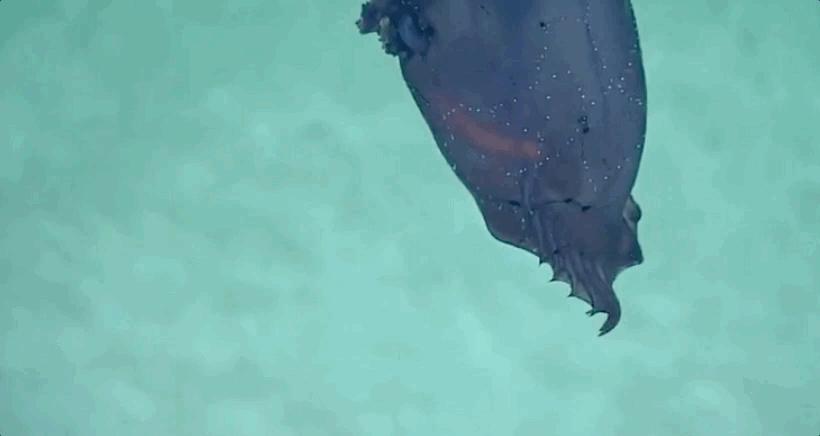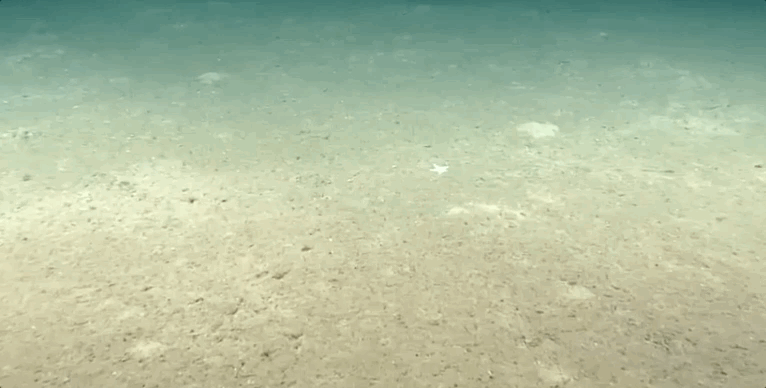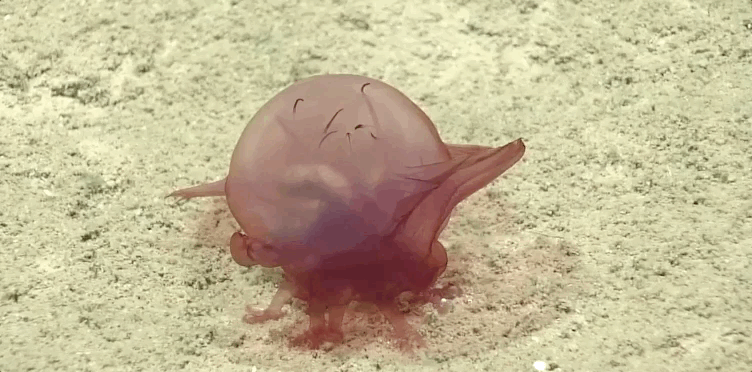After a brief hiatus between expeditions, the Okeanos Explorer is back, baby, and it makes for some thrilling viewing—if you’re into extreme close-ups of seafloor dwellers.From April 11 to May 3, the NOAA’s Okeanos crew of vehicle pilots and scientists are documenting the deepwater areas of the Gulf of Mexico. On its regular, weeks-long diving trips to locales including the waters of American Samoa and along Florida’s coast, the Deep Discoverer, a remotely operated vehicle, does a lot of science that informs scientists about the seafloor and the creatures that live there. NOAA’s livestream from the dive vehicle is a source of beauty and drama: Last year, we saw shrimp and dragonfish tango to the death, and watched colorful crinoids wave placidly in the current.I’ve spent several hours tuned into this expedition like it’s my own personal game of spot-the-sea critter. I leave it on in the background while I work on other things, and click over to the stream when I hear a fuss on the dive crew radios, usually to be greeted by some fish or gelatinous invertebrate caught in the camera’s eye.If I’m quick enough, I’ll grab a screenshot or a gif of what the ROV is seeing in that moment. It’s like playing Wild Earth, underwater science edition. Scrolling backwards through the live feed is cheating in my book, but if you want to do that to catch up on the action, it’s technically allowed.Here are some highlights from the third day of this expedition across the Gulf.Maybe I’m projecting too much onto the lives of seafloor-dwelling creatures, but they’re kind of emotive. Every once in a while a cusk-eel will throw a look that says “bug off” and I really feel it, you know? But most of the characters the crew encounters are very chill. Okeanos spotted this skate hanging out at nearly 5,000 feet deep—the far deepest end that skates are found living. Watching it leave the frame was the lowest my blood pressure’s been in weeks:
But most of the characters the crew encounters are very chill. Okeanos spotted this skate hanging out at nearly 5,000 feet deep—the far deepest end that skates are found living. Watching it leave the frame was the lowest my blood pressure’s been in weeks: ENHANCE:
ENHANCE: One of the most inexplicably entertaining parts of the live feed is when the crew spots a distant creature, and quick-zooms in to a ridiculous detail, like with this unsuspecting sea star:
One of the most inexplicably entertaining parts of the live feed is when the crew spots a distant creature, and quick-zooms in to a ridiculous detail, like with this unsuspecting sea star: Equally amusing is when someone on the crew’s well-trained eye spots some junk in the mid-field that turns out to be an alien lifeform… or, a comb jelly, like this one:
Equally amusing is when someone on the crew’s well-trained eye spots some junk in the mid-field that turns out to be an alien lifeform… or, a comb jelly, like this one: Also on the theme of translucent creatures: This sea cucumber. Watch it shovel sediment into its mouth-hole and then watch it digest that sediment through its see-through body. Sea cukes eat a ton, because sediment is pretty scarce in nutrients—the fast food addict of the sea floor. I will shout it from the rooftops, SEA CUCUMBERS ARE COOL AS HELL.
Also on the theme of translucent creatures: This sea cucumber. Watch it shovel sediment into its mouth-hole and then watch it digest that sediment through its see-through body. Sea cukes eat a ton, because sediment is pretty scarce in nutrients—the fast food addict of the sea floor. I will shout it from the rooftops, SEA CUCUMBERS ARE COOL AS HELL. If you want to tune in to your own riveting day of Okeanos specimen-spotting, this expedition will be live streamed through May 2.
If you want to tune in to your own riveting day of Okeanos specimen-spotting, this expedition will be live streamed through May 2.
Advertisement
Sea cucumbers shouldn’t be this captivating to watch—they have no true brain, and are generally pretty stationary—but when a free-swimming holothurian gets to moving, it’s quite mesmerizing. Not bad for an animal made of collagen.
Advertisement
